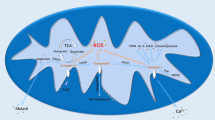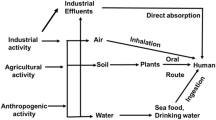Abstract
Food additives are widely used in various food products to preserve the taste, color, and other qualities. However, if they are used improperly or exceed the standard, they will cause damage to the human body. Sulfite is a commonly used food additive to prevent oxidation from deteriorating the nutrients in foods, it has been widely used as a bleaching agent in the food industry for a long time. In this study, human hepatocytes L02 cells were used as a model cell line to evaluate the toxicity of sodium sulfite. The cell morphology and cell proliferation were affected by sodium sulfite treatment, and apoptosis was detected. Transcriptome sequencing showed 97 differentially expressed genes (DEGs) between the experimental group (IC50) and the control group (MOCK), and 27 differentially expressed genes related to cell apoptosis, metabolism and inflammation were selected for validation by qPCR. Among them, 13 significantly upregulated genes and 14 significantly downregulated genes were identified by qPCR. The results showed that with increase of sodium sulfite concentration, the morphology of L02 changed, cell proliferation and activity were inhibited, and sodium sulfite caused apoptosis in a concentration- and time-dependent manner. The resulting toxic mechanism inhibits proliferation, damages the mitochondrial integrity, and promotes apoptosis.







Similar content being viewed by others
References
Qu D, Gu Y, Feng L, Han J (2017) High content analysis technology for evaluating the joint toxicity of sunset yellow and sodium sulfite in vitro. Food Chem 233:135–143. https://doi.org/10.1016/j.foodchem.2017.04.102
Cressey P, Jones S (2009) Levels of preservatives (sulfite, sorbate and benzoate) in New Zealand foods and estimated dietary exposure. Food Addit Contam Part A 26(5):604–613. https://doi.org/10.1080/02652030802669188
Vandevijvere S, Temme E, Andjelkovic M, Wil M, Vinkx C, Goeyens L, Loco J (2010) Estimate of intake of sulfites in the Belgian adult population. Food Addit Contamin Part A 27(8):1072–1083. https://doi.org/10.1080/19440041003754506
Wang X, Cao H, Guan XL, Long LH, Hu ZL, Ni L, Wang F, Chen JG, Wu PF (2016) Sulfite triggers sustained calcium overload in cultured cortical neurons via a redox-dependent mechanism. Toxicol Lett 258:237–248. https://doi.org/10.1016/j.toxlet.2016.06.009
Zujian C, Hangjun G (1999) Clinical side effects of antioxidants. Chin J Clin Nutr 3:140–141
Jianying B, Peiyu L, Jidong Z, Chunyan Z, Ruifeng L (2013) Sulfite exposure-induced hepatocyte death is not associated with alterations in p53 protein expression. Toxicology 312(3):142–148. https://doi.org/10.1016/j.tox.2013.1008.1004
Niknahad H, O'Brien PJ (2008) Mechanism of sulfite cytotoxicity in isolated rat hepatocytes. Chem Biol Interact 174(3):147–154. https://doi.org/10.1016/j.cbi.2008.05.032
Wee Hong W, Hongyuan Y, Kim Ping W, Barry H (2003) Sulphite oxidase gene expression in human brain and in other human and rat tissues. Biochem Biophys Res Commun 305(3):619–623. https://doi.org/10.1016/s0006-1291x(1003)00833-00837
Luis G, Raquel M, Laura B (2007) Effect of the olive oil phenol hydroxytyrosol on human hepatoma HepG2 cells. Protection against oxidative stress induced by tert-butylhydroperoxide. Eur J Nutr 46(2):70–78. https://doi.org/10.1007/s00394-00006-00633-00398
Gunnison AF (1981) Sulphite toxicity: a critical review of in vitro and in vivo data. Food Cosmet Toxicol 19(5):667–682. https://doi.org/10.1016/0015-6264(1081)90519-90518
Mitsuhashi H, Ikeuchi H, Nojima Y (2001) Is sulfite an antiatherogenic compound in wine? Clin Chem 47(10):1872
Shapiro R (1977) Genetic effects of bisulfite (sulfur dioxide). Mutat Res 39(2):149–175. https://doi.org/10.1016/0165-1110(1077)90020-90023
Ziqiang M (2003) Oxidative damage of sulfur dioxide on various organs of mice: sulfur dioxide is a systemic oxidative damage agent. Inhal Toxicol 15(2):181–195. https://doi.org/10.1080/08958370304476
Levetin E, Water P (2001) Environmental contributions to allergic disease. Curr Allergy Asthma Rep 1(6):506–514. https://doi.org/10.1007/s11882-001-0059-6
Pandya RJ, Solomon G, Kinner A, Balmes JR (2002) Diesel exhaust and asthma: hypotheses and molecular mechanisms of action. Environ Health Perspect 110(Suppl 1):103–112. https://doi.org/10.1289/ehp.02110s01103
Jones AP (2000) Asthma and the home environment. J Asthma Res 37(2):103–124
Joachim H, Bernd H, Christian F, Ines M, Mike P, Josef C, Matthias W, Lucas N, Erich HW (2002) Improved air quality in reunified Germany and decreases in respiratory symptoms. Epidemiology 13(4):394–401. https://doi.org/10.1097/00001648-200207000-200200006
Koshino T, Bhaskar KR, Reid LM, Gerard C, Warner A, Shore SA, Anderson K, Butler G, Iijima H, Drazen JM (1990) Recovery of an epitope recognized by a novel monoclonal antibody from airway lavage during experimental induction of chronic bronchitis. Am J Respir Cell Mol Biol 2(5):453. https://doi.org/10.1165/ajrcmb/1162.1165.1453
Lee JW, Teschke K, Kauppinen T, Aage A, Paavo P (2002) Mortality from lung cancer in workers exposed to sulfur dioxide in the pulp and paper industry. Environ Health Perspect 110(10):991–995. https://doi.org/10.1289/ehp.02110991
Reus KE, Houben GF, Stam M, Dubois AE (2000) Food additives as a cause of medical symptoms: relationship shown between sulfites and asthma and anaphylaxis; results of a literature review. Ned Tijdschr Geneeskd 144(38):1836–1839
Yao G, Yun Y, Sang N (2016) Differential effects between one week and four weeks exposure to same mass of SO2 on synaptic plasticity in rat hippocampus. Environ Toxicol 31(7):820–829. https://doi.org/10.1002/tox.22093
Yao G, Yue H, Yun Y, Sang N (2015) Chronic SO2 inhalation above environmental standard impairs neuronal behavior and represses glutamate receptor gene expression and memory-related kinase activation via neuroinflammation in rats. Environ Res 137(suppl 5):85–93. https://doi.org/10.1016/j.envres.2014.11.012
Mar TF, Norris GA, Koenig JQ, Larson TV (2000) Associations between air pollution and mortality in Phoenix, 1995–1997. Environ Health Perspect 108(4):347–353. https://doi.org/10.1289/ehp.00108347
Hong YC, Lee JT, Kim H, Ha EH, Schwartz J, Christiani CD (2002) Effects of air pollutants on acute stroke mortality. Environ Health Perspect 110(2):187–191. https://doi.org/10.1289/ehp.02110187
Kaye EM, Hyland K (1998) Amino acids and the brain: too much, too little, or just inappropriate use of a good thing? Neurology 51(3):668–670. https://doi.org/10.1212/wnl.1251.1213.1668
Shi C, Haiqin D (2002) Glutathione and its anti-oxidation effect today. Prog Physiol Sci 33(1):85–90
Elmas O, Aslan M, Çağlar S, Derin N, Agar A, Alıcıgüzel Y, Yargıçoğlu P (2005) The prooxidant effect of sodium metabisulfite in rat liver and kidney. Regulat Toxicol Pharmacol 42(1):77–82. https://doi.org/10.1016/j.yrtph.2005.1001.1010
Bai JY, Meng ZQ (2004) Sulfur dioxide-induced liver pathology. Chin J Pathol 33(2):155–157
Lovati MR, Manzoni C, Daldossi M, Spolti S, Sirtori CR (1996) Effects of sub-chronic exposure to SO2 on lipid and carbohydrate metabolism in rats. Arch Toxicol 70(3–4):164–173. https://doi.org/10.1007/s002040050256
Wen-Hann T, Eichler FS, Sadaf H, Lee MS, Hagit B, Hanley CA, Ellen P, Krishnamoorthy KS, Shih VE (2005) Isolated sulfite oxidase deficiency: a case report with a novel mutation and review of the literature. J Pediatr 116(3):757. https://doi.org/10.1542/peds.2004-1897
Chunyan Z, Fusheng Y, Jianying B, Peiyu L, Yulong R (2012) Experimental study on the toxicity of sodium sulfite on HepG2 cells. J Environ Health 29(3):203–206
Bai J, Lei P, Zhao C, Wang Y, Yan D, Yang S (2016) Sodium sulfite promotes the assembly and secretion of very low-density lipoprotein in HL-7702 hepatocytes. Toxicol Rep 3:98–104. https://doi.org/10.1016/j.toxrep.2015.1012.1005
Chen Y, Wang C, Wu J, Li L (2015) BTG/Tob family members Tob1 and Tob2 inhibit proliferation of mouse embryonic stem cells via Id3 mRNA degradation. Biochem Biophys Res Commun 462(3):208–214. https://doi.org/10.1016/j.bbrc.2015.1004.1117
Babon JJ, Varghese LN, Nicola NA (2014) Inhibition of IL-6 family cytokines by SOCS3. Semin Immunol 26(1):13–19. https://doi.org/10.1016/j.smim.2013.1012.1004
Suk FM, Chang CC, Lin RJ, Lin SY, Liu SC, Jau CF, Liang YC (2018) ZFP36L1 and ZFP36L2 inhibit cell proliferation in a cyclin D-dependent and p53-independent manner. Sci Rep 8(1):2742. https://doi.org/10.1038/s41598-41018-21160-z
Wang L, Hu J, Qiu D, Gao H, Zhao W, Huang Y, Jiang T, Zhou J, Chen Y (2019) Dual-specificity phosphatase 5 suppresses ovarian cancer progression by inhibiting IL-33 inhibiting. Am J Transl Res 11(2):844–854
Zhu W, Li Z, Xiong L, Yu X, Chen X, Lin Q (2017) FKBP3 promotes proliferation of non-small cell lung cancer cells through regulating Sp1/HDAC2/p27. Theranostics 7(12):3078–3089. https://doi.org/10.7150/thno.18067
Rödel F, Martin D, Helmke C, Balermpas P, Fokas E, Wieland U, Rave-Fränk M, Kitz J, Matthess Y, Raab M, Strebhardt K, Rödel C (2016) Polo-like kinase 3 and phosphoT273 caspase-8 are associated with improved local tumor control and survival in patients with anal carcinoma treated with concomitant chemoradiotherapy. Oncotarget 7(33):53339–53349. https://doi.org/10.18632/oncotarget.10801
Hwang Y, Jeong M, Park J, Kim M, Lee D, Shin B, Mukaida N, Ellis L, Kim H, Ahn B, Jung Y (2004) Interleukin-1beta stimulates IL-8 expression through MAP kinase and ROS signaling in human gastric carcinoma cells. Oncogene 23(39):6603–6611. https://doi.org/10.1038/sj.onc.1207867
Liu W, Tian T, Liu L, Du J, Gu Y, Qin N, Yan C, Wang Z, Dai J, Fan Z (2017) A functional SNP rs1892901 in FOSL1 is associated with gastric cancer in Chinese population. Sci Rep 7:41737. https://doi.org/10.41038/srep41737
Prasad A, Khudaynazar N, Tantravahi RV, Gillum AM, Hoffman BS (2016) ON 01910.Na (rigosertib) inhibits PI3K/Akt pathway and activates oxidative stress signals in head and neck cancer cell lines. Oncotarget 7(48):79388–79400. https://doi.org/10.18632/oncotarget.12692
Acknowledgements
We would like to thank Shanghai Meiji biomedical technology co., LTD for providing technical support of this manuscript.
Funding
This work was supported by the National Natural Science Foundation of China [Nos.31872425, 31861143051, 31702186, 31802140].
Author information
Authors and Affiliations
Corresponding author
Ethics declarations
Conflict of interest
The authors declare that they have no competing interests.
Additional information
Publisher's Note
Springer Nature remains neutral with regard to jurisdictional claims in published maps and institutional affiliations.
Appendix
Appendix
See Fig. 8 and Tables 1 and 2.
qRT-PCR verified the expression of 27 differentially expressed genes; qRT-PCR used the same RNA samples (three samples from each treatment group). All qRT-PCR data were shown as mean ± standard error. Their expression relative to β-Actin was quantified by qRT-PCR. a Indicated the expression level of the upregulated gene b Indicated the expression level of the downregulated gene. The results were expressed as the Duncan test in one way ANOVA to calculate its p value. * indicated p < 0.05; ** indicated p < 0.01; *** indicated p < 0.001
Rights and permissions
About this article
Cite this article
Han, X., Zhu, F., Chen, L. et al. Mechanism analysis of toxicity of sodium sulfite to human hepatocytes L02. Mol Cell Biochem 473, 25–37 (2020). https://doi.org/10.1007/s11010-020-03805-8
Received:
Accepted:
Published:
Issue Date:
DOI: https://doi.org/10.1007/s11010-020-03805-8





